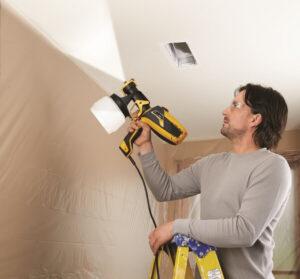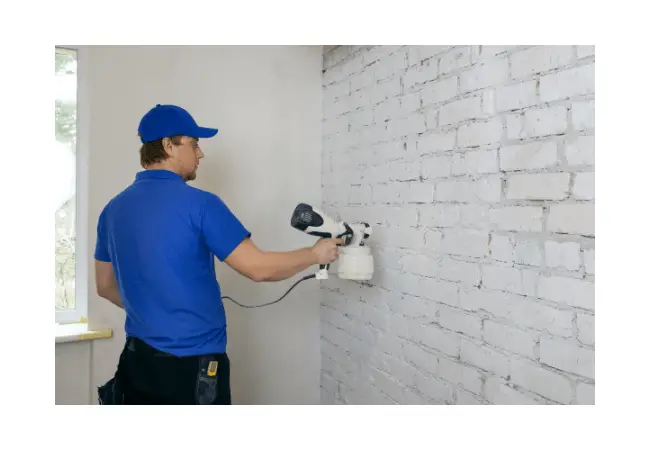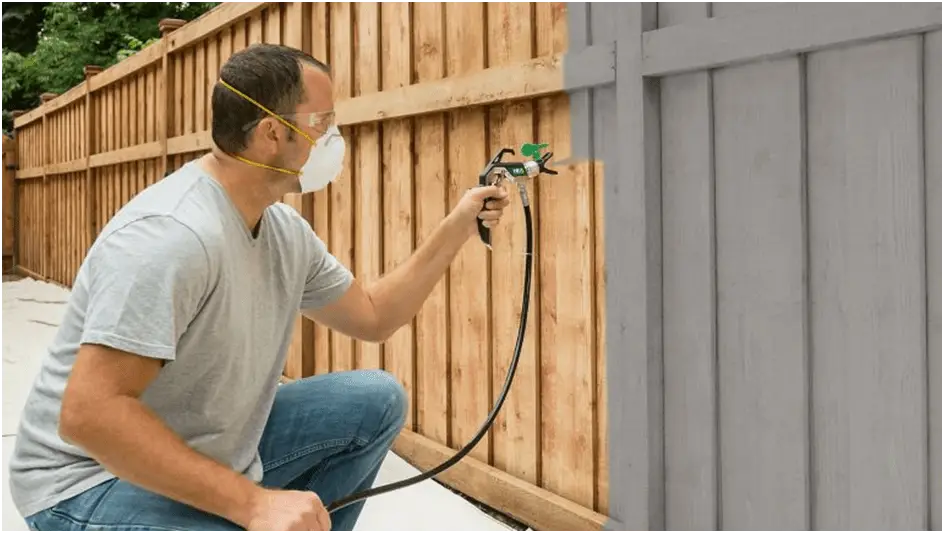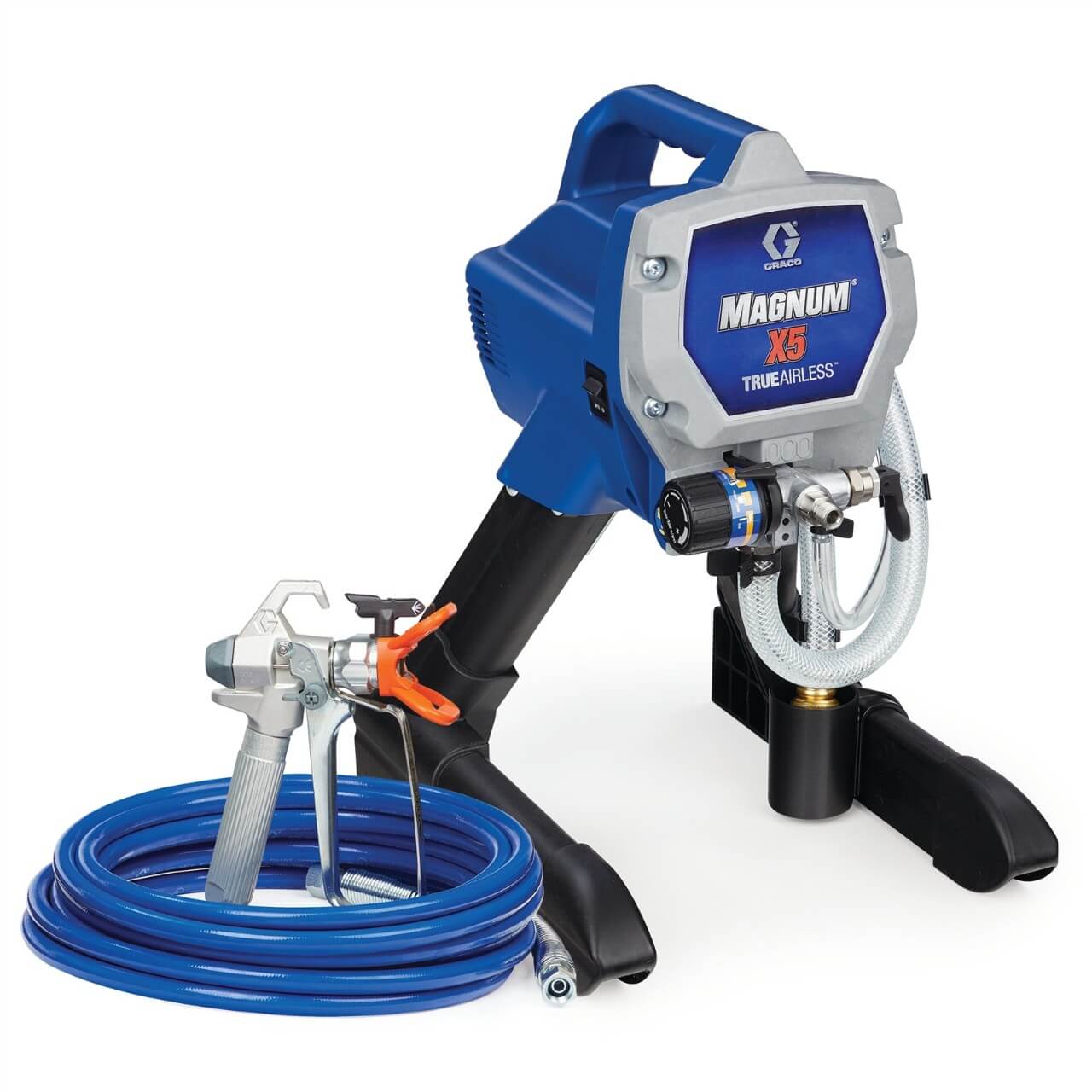Discover expert tips and techniques on how to unclog a paint sprayer to quickly resolve paint sprayer clogs. Gain insights into the common causes of clogs and learn how to prevent them in the first place. Plus, uncover effective methods for clearing blockages and maintaining the optimal performance of your paint sprayer. With these invaluable strategies, tackle clogs with confidence and keep your paint sprayer running smoothly for flawless results.
Table of Contents
Key Takeaway:
- Understanding the causes and signs of a clogged paint sprayer is crucial for efficient maintenance.
- The step-by-step cleaning process includes disassembling the paint sprayer, cleaning the nozzle, eliminating leftover paint, reassembling and testing the paint sprayer, and thoroughly cleaning the unit.
- Maintaining your paint sprayer regularly will ensure its longevity and consistent performance.
Here is a six-step guide to efficiently unclog your paint sprayer:
- Disassembling the Paint Sprayer: Start the unclogging process by carefully disassembling the different components of your paint sprayer. This will give you better access to the areas that need cleaning and make the subsequent steps easier.
- Cleaning the Nozzle: The nozzle is often the primary location where paint clogs occur. Use a nozzle cleaning tool or a small wire brush to remove any dried or stuck paint particles from within the nozzle. Ensure thorough cleaning to restore optimal paint flow.
- Eliminating Leftover Paint: To completely unclog your paint sprayer, you must eliminate any residual paint in other parts of the device. Clean out all hoses, filters, and other attachments thoroughly, ensuring there are no remaining traces of dried or hardened paint.
- Reassembling and Testing the Paint Sprayer: Once all the components are cleaned, reassemble your paint sprayer securely before testing its functionality. Double-check that everything is properly connected and tightened before proceeding.
- Thorough Cleaning of the Unit: In addition to addressing specific clogs, it’s essential to perform regular maintenance on your paint sprayer to prevent future issues. After every use, thoroughly clean all parts of the unit according to the manufacturer’s instructions.
By following these efficient steps, you can successfully unclog your paint sprayer and avoid unnecessary disruptions during painting projects.
To ensure long-lasting performance from your paint sprayer, it’s vital to maintain it regularly. Invest time in performing preventive measures like routine cleanings and inspections. By doing so, you can extend the lifespan of your paint sprayer and minimize the likelihood of encountering clogs in the future.
Don’t let a clogged paint sprayer halt your progress on painting projects. Unclogging your paint sprayer efficiently will save you valuable time and allow you to continue with your work uninterrupted. With these steps in mind, take immediate action to keep your paint sprayer clean and ready for your next painting project. Don’t miss out on the benefits of maintaining a well-functioning paint sprayer.
Understanding the Problem

When it comes to unclogging a paint sprayer, understanding the problem is the key. In this section, we will take a closer look at the causes and signs of a clogged paint sprayer. By identifying these factors, you can effectively troubleshoot and address the issue at hand. So, let’s dive in and equip ourselves with the knowledge needed to tackle this common problem head-on.
Causes and Signs of a Clogged Paint Sprayer
A clogged paint sprayer can be caused by various factors, resulting in difficulties with the painting process. Recognizing the causes and signs of a clogged paint sprayer is essential in order to effectively address and resolve the issue.
To identify the causes and signs of a clogged paint sprayer, follow these three steps:
- Inspect the spray pattern: Notice any irregularities or interruptions in the spray pattern, such as spattering or inconsistent coverage. These can indicate that there is a blockage in the nozzle or other parts of the paint sprayer.
- Check for reduced pressure: If you notice a decrease in the pressure or flow of paint from your sprayer, it could be a sign of clogging. This could be caused by dried paint particles or debris obstructing the internal components.
- Pay attention to unusual noises: Unusual sounds coming from your paint sprayer, such as grinding or sputtering noises, may suggest that there is a clog somewhere within the system. These sounds can be an indicator that it’s time for cleaning and maintenance.
By understanding these causes and signs of a clogged paint sprayer, you can take appropriate measures to unclog it before it affects your painting projects. Regular maintenance and cleaning are essential to ensure smooth operation and consistent performance of your paint sprayer over time.
Cleaning a paint sprayer may sound like a messy job, but with our step-by-step guide, you’ll have it unclogged faster than you can say ‘splatter’.
Step-by-Step Cleaning Process
The step-by-step cleaning process is pivotal to unclogging a paint sprayer effectively. From disassembling the paint sprayer to thoroughly cleaning the entire unit, each sub-section in this guide provides essential insights and techniques to restore the functionality of your device. By following these steps diligently, you can ensure that your paint sprayer functions optimally, avoiding common clogging issues and achieving smooth and consistent paint application.
Step 1: Disassembling the Paint Sprayer
Disassembling the paint sprayer is an essential step in unclogging it effectively. Proper disassembly allows you to access all the necessary components for thorough cleaning, ensuring optimal performance of your paint sprayer.
To disassemble the paint sprayer, follow these three steps:
- Start by disconnecting the sprayer from the power source and relieving any pressure inside. This can be done by turning off the sprayer and releasing any residual air or paint through the pressure release valve.
- Next, remove the nozzle and any other detachable parts such as filters or hoses. Carefully unscrew or unclip these components, making sure to keep track of their order for reassembly later.
- Finally, separate the main body of the paint sprayer from its motor or power unit if applicable. This may involve unscrewing or unclipping additional parts and should be done with caution to avoid damaging any delicate internal components.
By following these steps, you will be able to safely and effectively disassemble your paint sprayer for cleaning purposes.
It’s important to note that each paint sprayer model may have slight variations in its disassembly process. Therefore, it’s always recommended to consult your manufacturer’s manual or guide for specific instructions tailored to your particular model.
Disassembling a paint sprayer might seem like a daunting task at first, but with proper guidance and careful execution, it becomes a straightforward process. Taking this necessary step ensures that you can thoroughly clean all parts of your paint sprayer and remove any clogs or obstructions that may impede its performance.
By regularly disassembling your paint sprayer for cleaning, you can prolong its lifespan and prevent future clogs from occurring. This maintenance practice is crucial in maintaining efficient functioning and achieving professional-quality results when using your paint sprayer.
Step 2: Cleaning the Nozzle
Cleaning the nozzle is an essential step in unclogging a paint sprayer. Neglecting to clean the nozzle can lead to blockages and uneven spray patterns, compromising the quality of your painting project.
- Disconnect the paint sprayer from the power source and relieve any remaining pressure by triggering the sprayer gun.
- Safely remove the nozzle by unscrewing it from the paint sprayer. Rinse it under running water or soak it in a cleaning solution to remove any dried paint or debris.
- Inspect the nozzle for any stubborn clogs. Use a small brush or toothpick to gently dislodge any remaining paint or particles that may be obstructing the flow.
- Dry the nozzle thoroughly before reattaching it to the paint sprayer. This will prevent any moisture from affecting future paint applications and ensure proper functioning of the sprayer.
Cleaning the nozzle effectively ensures smooth paint flow during your next painting job, preventing potential clogs and ensuring consistent coverage. Taking this step will help maintain optimal performance of your paint sprayer.
Pro Tip: After each use, consider using a lubricant specifically designed for paint sprayers on your nozzle threads to prevent them from sticking and make future cleaning easier.
Wave goodbye to clogged paint and hello to a sprayer that’s as clean as a whistle in just three simple steps.
Step 3: Eliminating Leftover Paint
To effectively eliminate leftover paint from a clogged paint sprayer, there are specific steps that need to be followed. This process ensures that the sprayer is thoroughly cleaned and ready for future use.
Here is a 4-step guide to “Step 3: Eliminating Leftover Paint”:
- Turn off and unplug the paint sprayer: Before removing any parts or attempting to clean the unit, it is important to turn off the power and unplug the sprayer from its power source. This ensures safety during the cleaning process.
- Remove the nozzle and filter: The nozzle and filter are two key components that can become clogged with leftover paint. Carefully detach these parts from the sprayer, following any instructions provided by the manufacturer. Inspect them for any visible residue or blockages.
- Rinse the nozzle and filter: To eliminate leftover paint, rinse both the nozzle and filter under warm water. Use a soft brush or toothbrush to gently scrub away any stubborn residue or debris. Ensure that all parts are thoroughly cleaned before moving on to the next step.
- Clean other affected areas: Apart from the nozzle and filter, there may be other areas of the paint sprayer that have residual paint build-up. Wipe down all accessible surfaces using a damp cloth or sponge soaked in warm water and mild detergent if necessary. Be careful not to wet any electrical components.
In addition to these steps, it is essential to wear protective gear such as gloves and goggles while performing this cleaning process to avoid contact with toxic substances or chemicals present in some paints.
By diligently following these four steps, you can effectively eliminate leftover paint from your clogged paint sprayer, ensuring optimal performance for future use. Putting the pieces back together, and crossing your fingers, as you prepare for the moment of truth with your resurrected paint sprayer.
Step 4: Reassembling and Testing the Paint Sprayer
Reassembling and testing the paint sprayer is a critical step in the unclogging process. It ensures that all components are properly aligned and functioning before proceeding with further use. Neglecting this step could result in ineffective spraying and potential damage to the sprayer.
- Align the disassembled parts: Carefully align all the disassembled parts of the paint sprayer, ensuring they fit together securely and correctly.
- Fasten any screws or attachments: Use appropriate tools to fasten any screws or attachments that were removed during the cleaning process. This will help secure the components in place.
- Check for leakage: Once reassembled, check for any signs of leakage from joints or connections. Any leaks should be addressed immediately to prevent further issues.
- Prepare for testing: Fill the paint sprayer with clean water to prepare for testing. This will help ensure that any remaining debris or paint residue is flushed out.
- Test spray functionality: Turn on the paint sprayer and test spray functionality by spraying clean water onto a disposable surface. Observe the spray pattern and pressure to ensure proper functioning.
It is important to note that each paint sprayer may have specific reassembly instructions detailed in its user manual, so referring to the manual is advisable for accurate reassembly.
After completing step 4: reassembling and testing the paint sprayer, you are ready to proceed with using your newly unclogged paint sprayer effectively and efficiently. By following these steps diligently, you can maintain your paint sprayer’s longevity while ensuring optimal performance for future painting projects.
Now that you have reassembled and tested your paint sprayer, it’s time to put it back into action! Don’t miss out on enjoying hassle-free painting experiences by neglecting this vital step. Take the time now to properly reassemble and test your sprayer, and you’ll be rewarded with smooth, even paint application and extend the lifespan of your equipment. Start your painting journey confidently and say goodbye to clogged paint sprayers!
Step 5: Thorough Cleaning of the Unit
To ensure optimal performance and longevity of your paint sprayer, it is essential to thoroughly clean the unit after each use. Proper cleaning will prevent the buildup of paint residue and clogs, allowing for smooth operation during future projects.
Here is a step-by-step guide to effectively clean your paint sprayer:
-
- Start by disconnecting the power source and removing any remaining paint from the sprayer. Dispose of the paint properly according to local regulations.
- Disassemble the necessary parts of the unit, such as the nozzle, filter, and spray tip. Refer to the manufacturer’s instructions for guidance on proper disassembly.
- Rinse each component with warm water or an appropriate cleaning solution, depending on the type of paint used. Use a soft brush or cloth to remove any stubborn residue or debris.
- Pay close attention to cleaning the nozzle thoroughly, as this is often a common area for clogs. Utilize a small wire brush or toothpick to gently remove any dried paint or buildup.
- Once all parts are cleaned, carefully reassemble them back onto the sprayer in their correct positions. Ensure that everything fits snugly and securely.
- Before using your newly cleaned paint sprayer again, perform a test spray onto a scrap material or surface to check for proper functionality and ensure that no clogs remain.
By following this thorough cleaning process regularly, you can maintain your paint sprayer in optimal condition and avoid frustrating clogs that may hinder your painting projects.
It is important to note that different models of paint sprayers may have specific cleaning instructions provided by the manufacturer. Always refer to these guidelines when available for best results.
Thoroughly cleaning your paint sprayer after each use not only keeps it in top shape but also extends its lifespan, allowing you to achieve professional-quality results time and time again.
Conclusion
In conclusion, by understanding the importance of maintaining your paint sprayer for longevity, you can ensure optimal performance and avoid frustrating clogs. Stay tuned as we delve into practical tips and tricks to keep your paint sprayer in top shape, allowing for smooth and efficient paint application. Remember, proper maintenance is key to extending the lifespan of your equipment and achieving professional-quality results.
Variation of the main title: Maintaining Your Paint Sprayer for Longevity
Maintaining Your Paint Sprayer for Longevity is essential for optimal performance and extended lifespan. By following a few simple steps, you can ensure that your paint sprayer remains in top condition and continues to deliver exceptional results.
To maintain your paint sprayer for longevity, follow these four steps:
- Regular Cleaning: Make it a habit to clean your paint sprayer after each use. Disassemble the unit and clean all the parts thoroughly using appropriate cleaning solutions. This will prevent any buildup of paint residue or clogs that can affect the performance of the sprayer.
- Lubrication: A properly lubricated paint sprayer operates smoothly and efficiently. Apply lubricant to all moving parts, such as the piston rod and packings, according to the manufacturer’s instructions. This will help reduce friction and extend the life of these components.
- Storage: When not in use, store your paint sprayer in a clean and dry environment. Protect it from dust, moisture, and extreme temperatures that can damage sensitive components. Proper storage will ensure that your sprayer is ready for use whenever you need it.
- Regular Maintenance: Periodically inspect your paint sprayer for any signs of wear or damage. Replace worn-out parts promptly to avoid further complications. Additionally, check for proper alignment of spray patterns and adjust settings as required for optimal performance.
By following these steps, you can maintain your paint sprayer’s longevity and enjoy its efficient operation throughout its lifespan.
It is worth noting that these maintenance practices are equally important to prevent clogging issues in your paint sprayer. By keeping it clean, properly lubricated, well-stored, and regularly maintained, you significantly reduce the risk of clogs occurring during operation, ensuring a consistently smooth spraying experience with excellent results every time.
Some Facts About How To Unclog a Paint Sprayer:
- ✅ A clogged paint sprayer can be easily fixed in a few steps. (Source: Tool Nerds)
- ✅ To unclog a paint sprayer, you will need drying cloths and paper towels, a solvent (water or denatured alcohol), gloves, a breathing mask, and a fine brush. (Source: Tool Nerds)
- ✅ The first step is to disassemble the unit after reading the user manual to avoid any issues when putting it back together. (Source: Tool Nerds)
- ✅ The nozzle can be cleaned by submerging it in water or solvent, blowing air through it, and using cotton buds or a needle to remove any residue. (Source: Tool Nerds)
- ✅ After cleaning the nozzle, it is important to double-check that all leftover paint is eliminated and reassemble the unit for testing. (Source: Tool Nerds)
FAQs about How To Unclog A Paint Sprayer
How do I unclog a paint sprayer?
To unclog a paint sprayer, follow these steps:
- Disassemble the unit, making sure to read the user manual first to avoid any issues when putting it back together.
- Clean the nozzle by submerging it in water or solvent and letting it rest for a few minutes. Then, blow air through the nozzle while it’s wet. If the paint doesn’t come out, use cotton buds or a needle to remove any residue.
- Double-check that all leftover paint is eliminated from the inner side of the nozzle. Use a dry cloth, dry towels, or a fine brush for cleaning.
- Reassemble the unit and test if it’s unclogged by squeezing the trigger and blowing air and paint on a piece of paper. If it’s still clogged, repeat the first three steps.
- (Optional) Clean the whole unit during the second step by using cotton buds, paper towels, or cloth on every part. Use fine materials for cleaning to avoid damaging sensitive parts.
What do I need to unclog a paint sprayer?
To unclog a paint sprayer, you’ll need the following:
- Drying cloths and paper towels
- Solvent (water or denatured alcohol)
- Gloves
- A breathing mask
- A fine brush
Can I use a breathing mask while unclogging a paint sprayer?
Yes, it is recommended to use a breathing mask while unclogging a paint sprayer to protect yourself from inhaling any potentially harmful fumes or dust particles.
How often should I clean my paint sprayer?
It is generally recommended to clean your paint sprayer after each use or when you notice any clogging or buildup that affects its performance. Regular maintenance and cleaning can help prolong the lifespan of your paint sprayer.
Should I use a rough cloth or a fine brush to clean my paint sprayer?
When cleaning your paint sprayer, it is best to avoid using rough cloth or materials that may scratch or damage the sensitive parts of the sprayer. Instead, opt for a fine brush or soft materials to clean the components.
What should I do if my paint sprayer is still clogged after cleaning?
If your paint sprayer is still clogged after following the cleaning steps, you may need to repeat the process or consider using a dedicated spray gun cleaning solution that is designed to loosen various finishes. If the issue persists, it may be best to consult a professional or seek assistance from the manufacturer.





Leave a Reply